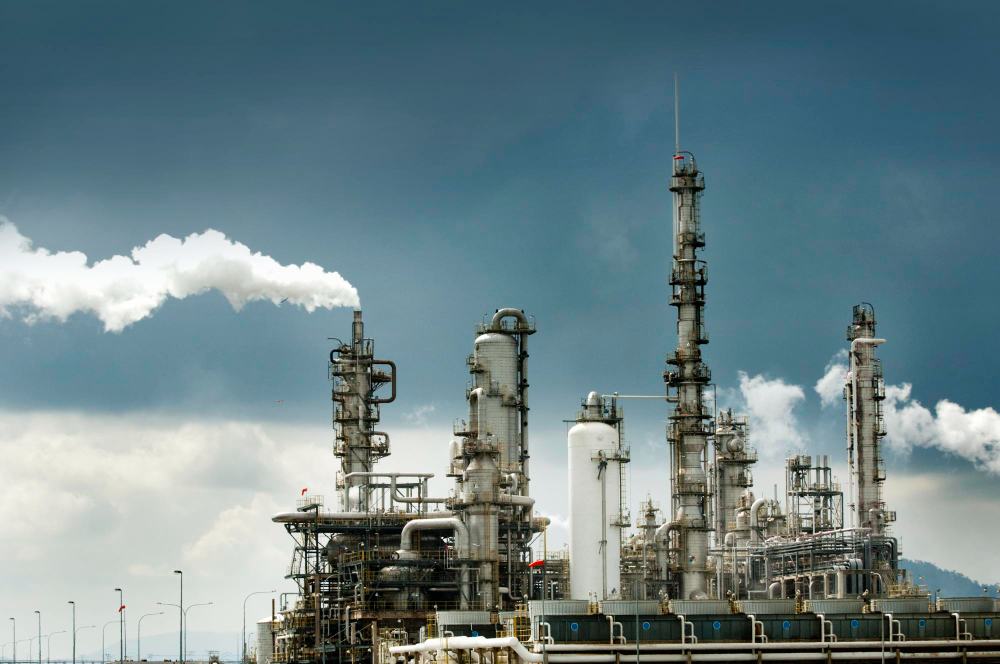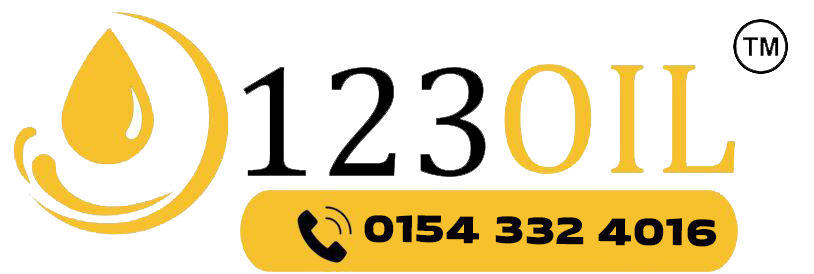Crude oil is heated to separate it into useful components such as petrol, diesel, kerosene, and lubricating oils. During the refining process, crude oil is heated to around 350°C–400°C in a furnace and then sent to a fractionating column, where different hydrocarbons are separated based on their boiling points. Lighter hydrocarbons, such as petrol, vaporise and rise to the top, while heavier ones, like diesel and bitumen, remain lower down. This heating process, known as fractional distillation, is essential for turning raw crude oil into usable fuels and products.
Crude oil is one of the world’s most valuable natural resources, often referred to as “black gold.” However, in its raw form, it’s of little use. Crude oil is a complex mixture of hydrocarbons, and to make it valuable for everyday use, it must be refined into products such as petrol, diesel, kerosene, jet fuel, and lubricants. The very first and most essential step in this refining process is heating. But why is crude oil heated? What purpose does it serve, and how does this simple action transform raw oil into usable fuels?
This blog explores the science and purpose behind heating crude oil, the processes involved, and why this stage is vital in producing the fuels and products that power our modern world.
Understanding Crude Oil
Crude oil is a naturally occurring liquid found beneath the Earth’s surface. It consists mainly of hydrocarbons, molecules made up of hydrogen and carbon atoms, along with small amounts of sulphur, nitrogen, oxygen, and trace metals. What makes crude oil complex is that these hydrocarbons vary greatly in size, structure, and boiling points.
For example, the lighter hydrocarbons, such as methane and ethane, have low boiling points and evaporate easily. In contrast, heavier ones, like bitumen or heavy fuel oils, require extremely high temperatures to vaporise. Due to the wide range of hydrocarbon types, crude oil must be separated into distinct fractions before it can be utilised efficiently.
The Role of Heating in Crude Oil Refining
The main reason crude oil is heated is to separate it into its various useful components. This process is known as fractional distillation, and heating is its driving force. Without heating, there would be no way to distinguish between the many different compounds that make up crude oil.
By heating crude oil, refinery operators can capitalise on the fact that different hydrocarbons have distinct boiling points. When the oil is heated, lighter compounds vaporise first, rising through the distillation column, while heavier ones remain in liquid form lower down.
In essence, heating crude oil allows the refinery to break down the mixture into useful, distinct products such as petrol, diesel, and kerosene, each with specific applications.
How Heating Works in Fractional Distillation
The process of heating crude oil begins in a furnace or heater, where the oil is gradually raised to temperatures of around 350°C to 400°C. This does not burn the oil; rather, it vaporises most of its components. The hot mixture is then sent to a large vertical structure called a fractionating column.
Here’s what happens step-by-step:
Preheating the Crude Oil
Before entering the furnace, crude oil passes through heat exchangers where it is preheated using heat recovered from other refinery processes. This makes the process more energy-efficient.
Heating in the Furnace
The preheated crude oil is then sent to the furnace, where it is heated to a high temperature (typically around 370°C). At this point, many of the hydrocarbons become vapours, while some heavier fractions remain liquid.
Entering the Fractionating Column
The hot mixture enters the fractionating column, a tall steel tower with a series of trays and condensers. As the vapours rise in the column, the temperature gradually decreases from bottom to top.
Condensation and Collection of Fractions
Different hydrocarbons condense (return to a liquid form) at various heights, depending on their boiling points. Lighter fractions, such as petrol, condense near the top, while heavier oils condense further down.
- Top of the column: Refinery gases (propane, butane)
- Upper section: Petrol (gasoline)
- Middle section: Kerosene and jet fuel
- Lower section: Diesel oil
- Bottom section: Heavy oils and bitumen
This separation is only possible because of the heating process. Without it, the hydrocarbons would remain mixed, rendering the crude oil almost useless.

Why Temperature Control Is Critical
The temperature in a distillation column must be carefully monitored and controlled. Each hydrocarbon fraction has a specific boiling range. If the temperature is too low, some heavier hydrocarbons may not vaporise properly; if it’s too high, lighter ones may break down or crack prematurely.
Modern refineries use automated control systems to maintain precise temperature gradients throughout the column. This ensures that each fraction condenses at the right height, improving efficiency and product purity.
Beyond Distillation: Further Heating in Refining
Heating crude oil doesn’t stop at distillation. Once separated, some fractions undergo further heating in secondary refining processes such as:
- Cracking: This process breaks down large, heavy hydrocarbon molecules into smaller, more useful ones, such as converting heavy oils into petrol and diesel. It requires both heat and catalysts.
- Reforming: Here, heat is used to rearrange hydrocarbon molecules, improving fuel quality and increasing the octane number of petrol.
- Hydro treating: Heat combined with hydrogen removes impurities such as sulphur, producing cleaner fuels.
Each of these processes relies heavily on heat, further underscoring the importance of heating crude oil in the refining industry.
Energy Efficiency and Environmental Impact
Heating crude oil consumes vast amounts of energy, and managing this efficiently is a priority for refineries worldwide. Advanced refineries often reuse heat from other processes through heat recovery systems. This reduces fuel consumption and lowers greenhouse gas emissions.
Additionally, modern technologies aim to make furnaces more energy-efficient and less polluting. For example, using low-NOx burners helps reduce nitrogen oxide emissions, while optimising combustion improves fuel economy.
While heating is essential, it also contributes significantly to a refinery’s carbon footprint. That’s why the industry is increasingly investing in renewable energy sources and carbon capture systems to reduce environmental impact.
The Science behind Heating and Separation
At the core of this process lies a simple scientific principle, different substances have different boiling points. For instance:
- Methane boils at -161°C
- Petrol components boil between 40°C and 200°C
- Kerosene between 150°C and 275°C
- Diesel between 250°C and 350°C
- Heavy oils above 350°C
By heating crude oil, these differences can be exploited to separate hydrocarbons cleanly and efficiently. It’s a perfect demonstration of applied thermodynamics in action.
Importance of Heating in Fuel Quality
The quality of fuels such as petrol and diesel depends greatly on how well the crude oil has been heated and refined. Proper heating ensures that hydrocarbons are separated at optimal temperatures, which affects the final product’s performance, combustion characteristics, and emissions.
For instance, if the heating process is inconsistent, petrol might have a low octane rating, leading to engine knocking. Similarly, poorly refined diesel could have higher sulphur content, contributing to pollution. Therefore, precise heating is directly linked to both fuel performance and environmental standards.
Heating and Modern Refinery Technologies
Modern refineries are transitioning to more advanced systems, where heating is controlled digitally through artificial intelligence and real-time monitoring. This ensures maximum efficiency, minimal energy waste, and consistent product quality.
Technological innovations, such as vacuum distillation (heating crude oil under reduced pressure), also help process heavier fractions without reaching excessively high temperatures, thereby reducing the risk of thermal decomposition.
Economic Importance of Heating Crude Oil
Without the heating and distillation process, the crude oil industry, and indeed much of the global economy, would come to a standstill. Every drop of fuel that powers vehicles, heats homes, and runs industries begins with this fundamental step.
Heating crude oil adds immense value to raw petroleum, transforming it into refined products that power transportation, manufacturing, and everyday life. 123 Oil rely on refined fuels produced through this process to distribute high-quality heating oil and energy solutions across the UK.
Conclusion
So, why is crude oil heated? The answer lies in the essential need to transform a complex, unusable mixture into the refined fuels that power our daily lives. Heating is the first and most crucial step in refining, it drives separation, determines product quality, and ensures that every hydrocarbon finds its purpose.
From cars to planes, from heating homes to producing plastics, nearly everything starts with crude oil being heated. This simple yet sophisticated process stands at the heart of global energy production, proving that controlled heat is one of humanity’s most powerful tools for progress.
Frequently Asked Questions
Crude oil is heated to separate it into its various components based on their boiling points. This enables refineries to produce useful products, such as petrol, diesel, and kerosene.
Crude oil is typically heated to a temperature of around 350°C to 400°C in a furnace before being introduced into the distillation column. This temperature is high enough to vaporise lighter hydrocarbons without causing decomposition.
If crude oil isn’t heated correctly, the separation of hydrocarbons will be inefficient. Some components may not vaporise, while others might break down, leading to poor-quality fuels.
The fractionating column separates vapours produced by heating crude oil. Each level of the column collects different fractions, such as petrol, kerosene, and diesel, according to their boiling points.
Heating crude oil consumes large amounts of energy and releases emissions. However, modern refineries utilise advanced heat recovery systems and cleaner technologies to minimise their environmental impact.










